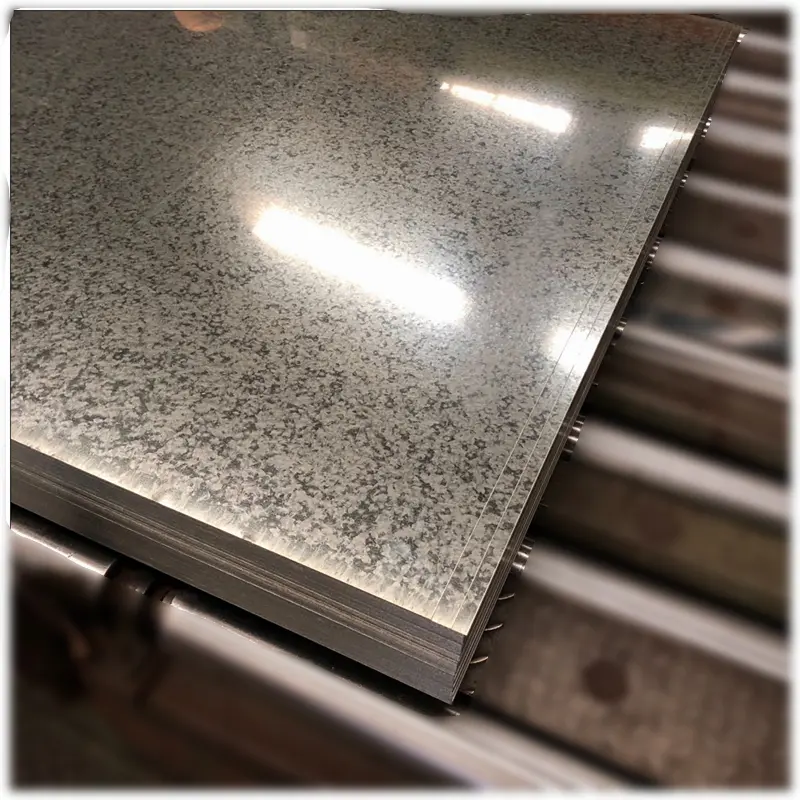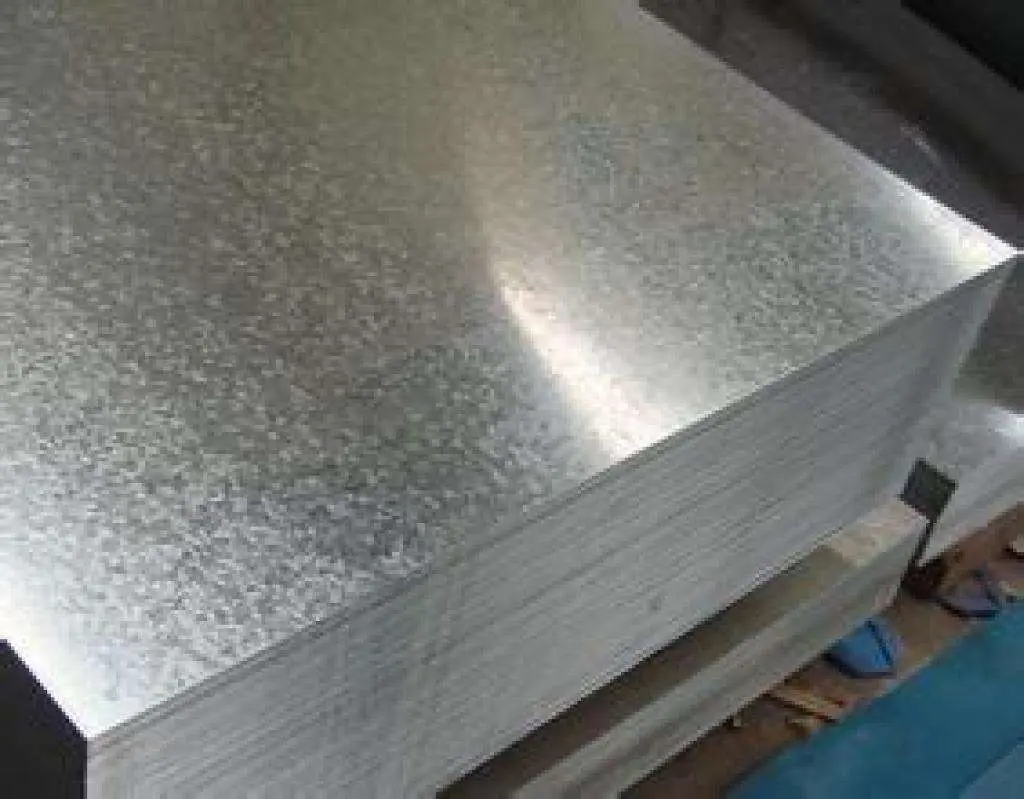What is the material of galvanized sheet
As the name implies, galvanized sheet is a layer of zinc coated on the surface of the Steel Sheet, which can play a role in corrosion prevention to a certain extent. This production method can also reduce the world's consumption of zinc.


Introduction to the material and use of galvanized sheet:
1. Non-alloy hot-dip galvanized steel strip
DC5XD series: It can be used for general use, deep drawing and biting. The greater the zinc content on the surface, the better the anti-corrosion performance; the smaller the surface galvanizing amount, the better the processing performance.
SXXXGD series: It can be used for structure, and it has good processing performance and corrosion resistance.
HXXXPD+Z series: Including low Alloy Steel, phosphorus steel and hardened steel, it has excellent processing performance and corrosion resistance.
2. Alloy hot-dip galvanized steel strip
DCXXD+ZF series: It can be used for structure, stamping and cold forming. This kind of galvanized sheet has more superior welding performance and coating performance, but it is very easy to peel off during processing.
Introduction to the classification of galvanized steel sheets:
1. Alloy galvanized steel sheet: The steel sheet produced by hot dip method has good weldability and adhesion performance.
2. Hot-dip galvanized steel sheet: This is a thin steel sheet with a thin layer of zinc attached to the surface, and its production process is continuous galvanizing.
3. Electrogalvanized steel sheet: The steel sheet is galvanized by electricity, but the zinc plated in this way is relatively thin and has poor corrosion resistance.
4. Single-sided galvanized steel sheet: Only one side of the steel sheet is galvanized. Whether it is used for processing, painting or welding, its adaptability is better than that of double-sided galvanized steel sheet.
5. Double-sided differential galvanized steel sheet: Single-sided galvanized steel sheet still has some disadvantages. In order to overcome these disadvantages, a thin layer of zinc will be plated on the other side of the steel sheet. This is the double-sided differential galvanized steel sheet.
6. Composite galvanized steel plate: In addition to pure steel, the internal material also includes a composite steel plate made of lead, aluminum and other metals, and then a layer of zinc is plated on its surface. This kind of steel plate has better anti-rust performance and better coating performance.
Galvanized steel sheet with high rust prevention effect
Galvanized steel sheet, as the name implies, is a material made by applying "galvanizing" to "steel sheet". First, let's introduce the manufacturing method and basic knowledge.
Manufacturing method
Galvanized steel sheet is a material made by galvanizing SPCC (cold rolled steel sheet). SPCC is a relatively cheap and easily available steel sheet with excellent workability, so it is often used for forming processes such as bending and drawing. However, SPCC is very easy to rust, so surface treatment is basically required. There are various methods such as painting and plating for the surface treatment of SPCC, among which galvanized steel sheet is galvanized.
Features
Plating is a surface treatment that forms a metal film on the surface of metal or resin. Among them, the process of forming a zinc film is called galvanizing. Zinc combines with oxygen in the air to form a passive oxide film. Therefore, it has the characteristic of having a very high rust prevention effect.
In addition, zinc has a higher ionization tendency than iron, so it also has the characteristic of being oxidized faster than iron. Therefore, if galvanizing is applied to iron (steel), even if a small scratch is temporarily generated on the electroplated surface, the iron inside is exposed, and the surrounding zinc will be corroded preferentially, thus having the effect of preventing iron corrosion. This phenomenon is called sacrificial corrosion protection.
Types
Galvanizing is classified according to the plating method and metal.
There are two methods: hot-dip galvanizing and electro-galvanizing.
Hot-dip galvanizing is a method of immersing steel plates and parts in heated and molten zinc. You can imagine cheese fondue, chocolate fondue, etc. It is also called hot dip galvanizing and hot dip galvanizing. In addition to being able to obtain a thicker electroplated layer, it is also characterized by being very strong and being able to obtain a long-term corrosion resistance effect because an alloy layer of zinc and base metal can be obtained between the electroplated layer and the base metal layer. On the other hand, since the product or part is immersed in high-temperature molten zinc, it may also cause deformation due to heat.
Electro-galvanizing is a method of placing zinc and the plated material in a solution and passing electricity to cause the zinc dissolved in the solution to precipitate on the surface of the plated material. There are various methods of electroplating, such as zinc ammonium baths and zinc potassium chloride baths using acidic solutions, and cyanide baths and zincate baths using alkaline solutions. Its characteristics are uniform thickness and excellent decorative properties. On the other hand, unlike hot-dip galvanizing, electrogalvanizing cannot be used directly. Chromating is usually performed to improve corrosion resistance and prevent white powder from being generated due to corrosion. Chromating is a treatment that makes zinc plating more durable by using a solution with a composition similar to that of the treatment solution used in chrome plating. Chromating can be used for decorative purposes.















